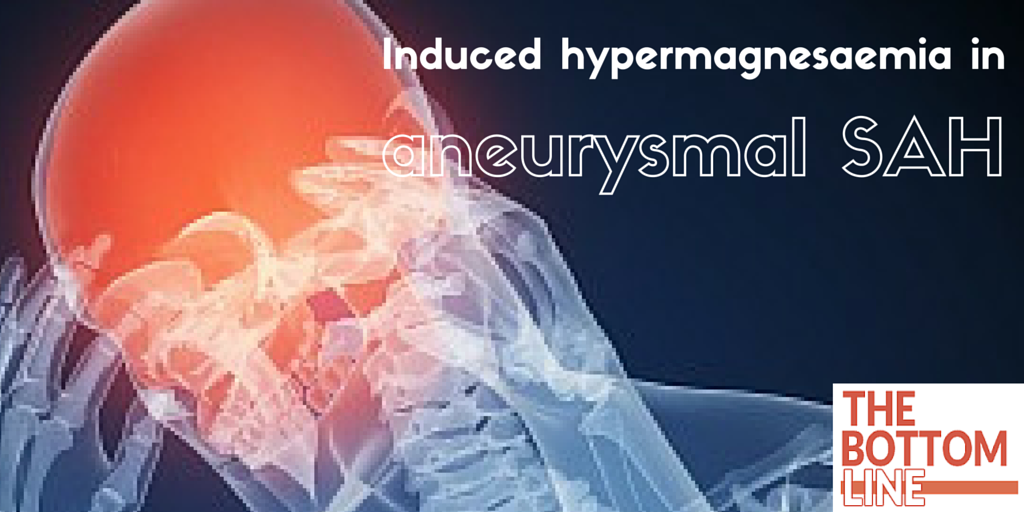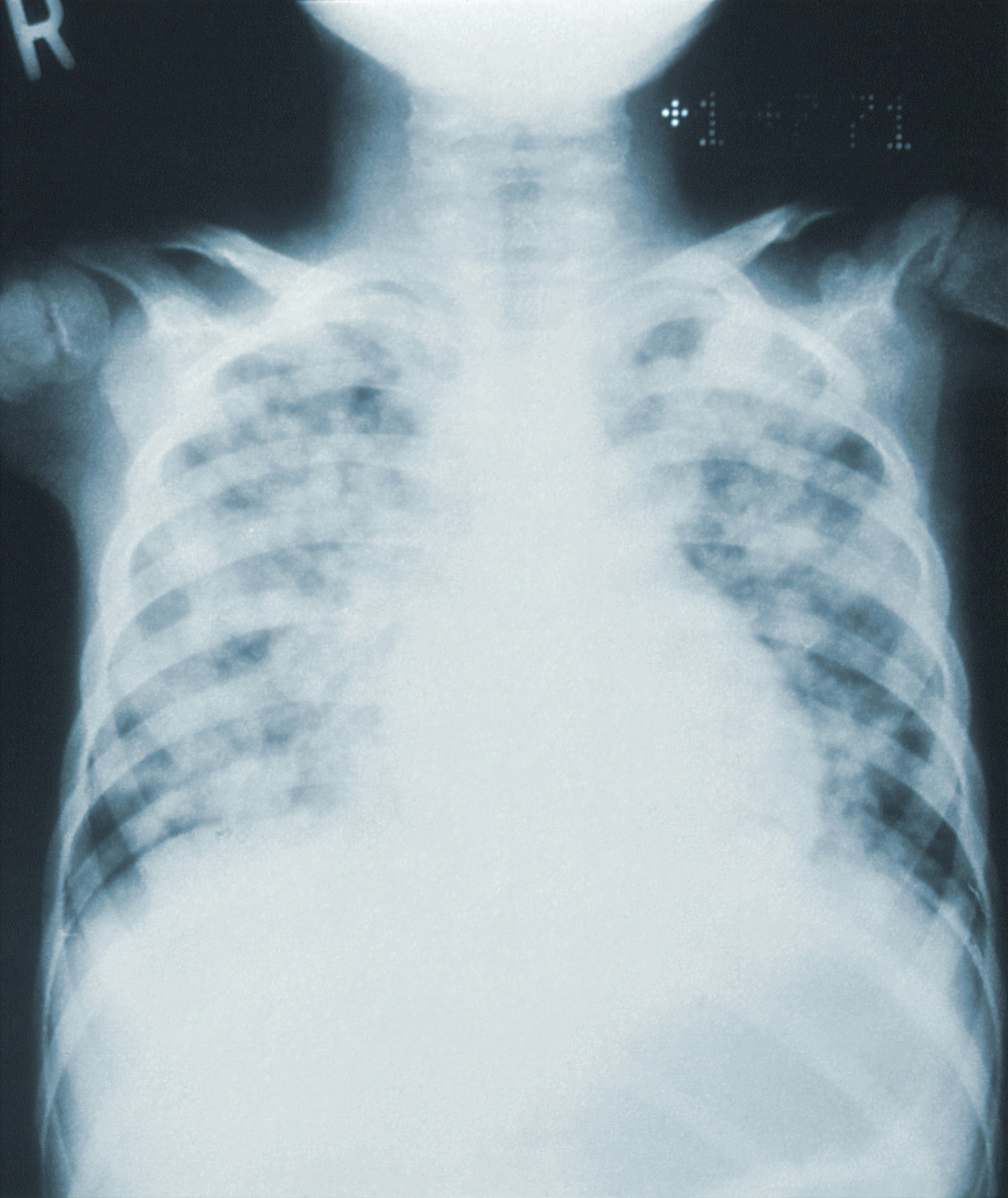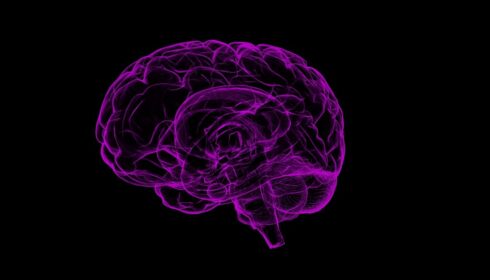Bradford
A randomised controlled trial of induced hypermagnesaemia following aneurysmal subarachnoid haemorrhage
@celiabradford 2013. Crit Care Resusc.15(2):119-125
Clinical Question
- In patients with aneurysmal subarachnoid haemorrhage does induced hypermagnesaemia reduce the incidence of cerebral artery vasospasm?
Design
- Randomised controlled trial
- Randomisation stratified by World Federation of Neurosurgical Society Grade of SAH
- Variable block size
- Allocation concealment maintained through use of sealed opaque envelopes
- Clinical staff in intensive care non-blinded to treatment allocation
- Outcome assessors and neurosurgical staff blinded to treatment allocation
- Sample size calculation: 190 patients would provide 80% power to detect a reduction in the incidence of vasospasm from 60% to 40%
Setting
- 2 tertiary centres in Australia
- April 2005 – December 2009
Population
- Inclusion:
- Clinical history consistent with aneurysmal SAH occurring within the previous 72 hours
- Aneurysmal SAH confirmed on CT
- Exclusion:
- Age <18; creatinine >200mmol/L; death thought imminent within 72 hours; myasthenia gravis; pregnancy; cerebral vasospasm present before inclusion
- 162 patients randomised
Comparing intervention to control group:
- Age (mean) 55.8 vs. 56.6
- Aneurysm size <5mm: 27.1% vs. 34%
- Aneurysm size >10mm: 22% vs. 8%
- GCS on admissiona (mean): 12.3 vs. 12.4
- WFNS grade:
- 1: 48.1% vs. 42%
- 2: 23.5% vs. 28.4%
- 3: 2.5% vs. 3.7%
- 4: 11.1% vs. 13.6%
- 5: 44.9% vs. 58%
- Hydrocephalous present: 44.9% vs. 58%
- APACHE II (mean): 14.1 vs. 13.4
Intervention
- High target range for serum magnesium (1.60-2.50 mmol/L)
- Mean serum magnesium in intervention group during study period: 1.70
Control
- Standard target range for serum magnesium (0.65-1.05 mmol/L)
- Mean serum magnesium in control group during study period: 0.87
In both intervention and control groups
- Patients received an IV infusion of magnesium sulphate at a constant rate of 20ml/hr; the concentration was adjusted to achieve the target concentration.
- The trial intervention was discontinued 12 days post original haemorrhage or on discharge from ICU, or if death thought to be imminent.
- Management of SAH based upon standard treament strategies
- Wherever possible, ruptured aneurysms secured by surgical or endovascualr treatment within 48 hours
- All patients received nimodipine
- BP supported with noradrenaline aiming for systolic BP of 120-160mmHg once aneurysm secure.
- Patients underwent cerebral angiography on day 5, or earlier if they developed clinical signs of suggestive of vasospasm.
- Clinically relevant vasospasm treated with chemical or balloon angioplasty and angiography was repeated daily until vasospasm resolved
Outcome
- Primary outcome: Incidence of cerebral arterial vasospasm diagnosed by digital subtraction angiography and adjusted for baseline characteristics – No significant difference
- Odds Ratio 0.51 (95% C.I. 0.26-1.02, P=0.06)
- Secondary outcomes: No significant difference
- Glasgow outcome score at 90 days
- Modified rankin score at 90 days
- Proportion of patients requiring endovascular treatment for vasospasm
- Duration of ICU stay
- Tertiary outcomes
- Median amount of noradrenaline administered was significantly higher in the intervention group
- The mean serum calcium concentration was significantly lower in the intervention group
Authors’ Conclusions
- Targeting high-range magensium levels in patients with SAH decreased vasospasm, but this was not statistically significant
Strengths
- Randomised controlled trial
- Allocation concealment maintained
- Blinding of assessors of primary outcome
- Good separation of magnesium level between intervention and control group
- Intention to treat analysis
Weaknesses
- Under powered
- ICU clinicians non-blinded
- Did not assess level of agreement (Kappa score) between assessors of primary outcome
- Did not record BP of patients in study. Any differences may have influenced results.
The Bottom Line
- This underpowered study found a non-significant reduction in vasospasm post SAH in patients treated with hypermagnesaemia. Larger trials will be required to determine if there is a significant difference and if this is results in improvements in patient-orientated outcomes.
Competing Interests
- The lead author is an editor for The Bottom Line. However, this summary and critique has been written and peer-reviewed independently from the authors
External Links
- [article] A randomised controlled trial of induced hypermagnesaemia following aneurysmal subarachnoid haemorrhage
- [further reading] ICN & Celia Bradford: Vasospasm after SAH
Metadata
Summary author: @davidslessor
Summary date: 3rd Nov 2015
Peer-review editor: @DuncanChambler





